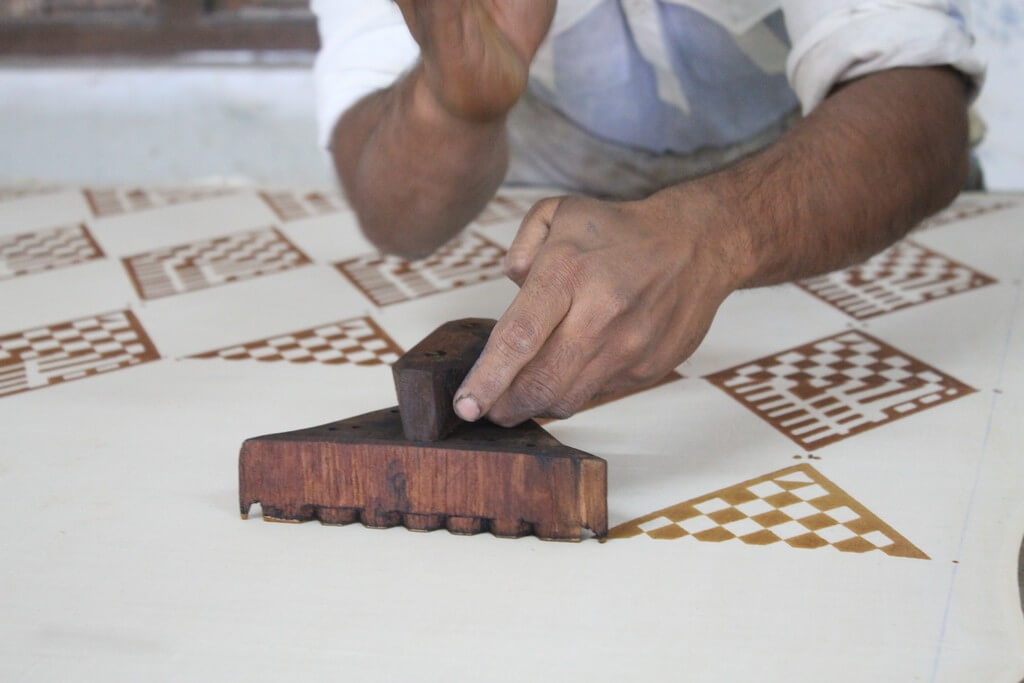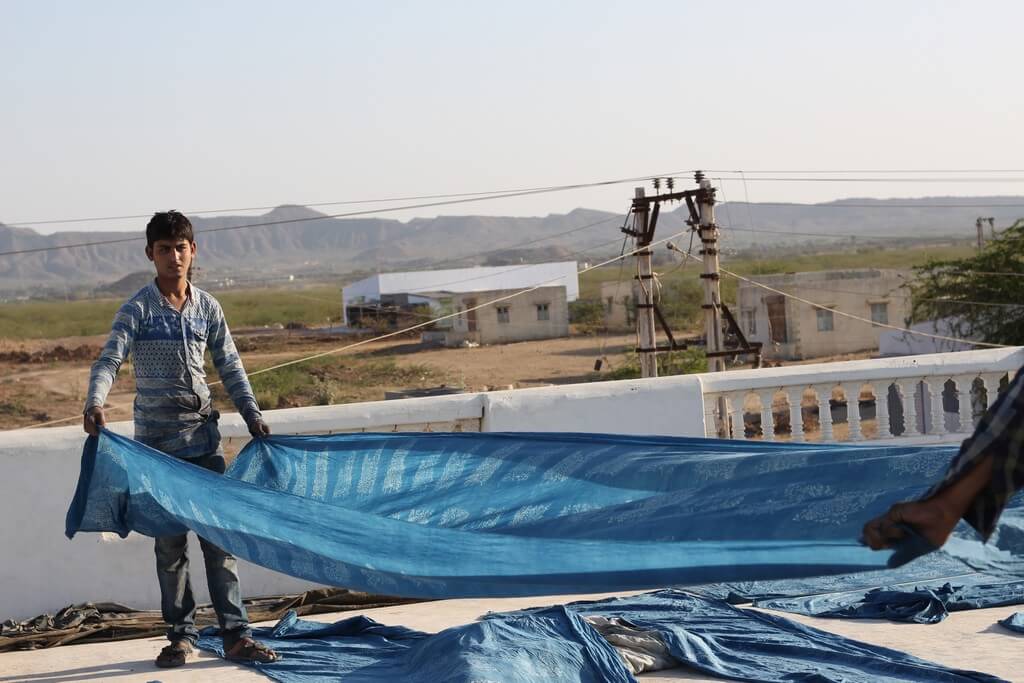History of Block Printing (with infographics)
22/02/2021 2021-02-22 6:01History of Block Printing (with infographics)
Block Printing also known as woodblock printing is a craft that uses hand-carved wooden ‘blocks’ to transfer print to fabric, paper or any other medium. It is a labour-intensive craft that relies on the ‘relief’ of its blocks to transfer design which when stamped in ink or dye is pressed along the length of the fabric to create its patterns. In order to make the block, the design is drawn on paper and then attached onto the wooden block which is then carved according to the design on top of it. This carved block is then used to print by using specially prepared dye baths. The printed design comes in a mirror-image of its carved pattern.

As a craft with a strong history, block printing is believed to have originated in China in the 3rd century. In the 4th century, its presence was identified in Egypt and other parts of Asia, from where it spread to Europe and the rest of the world. The earliest known example of a block print with an actual date is Diamond Sutra from 868 AD which is currently in the British Museum, London. In the 12th century, certain centres in the Indian subcontinent such as on the south, eastern and western coast were noted for their printed textiles. In the southern coast the pen or kalam (brush) was used to transfer the prints onto fabric. Rajasthan saw its own specialised development of printing and dyeing cotton, while Gujarat became a centre for printed fabrics using specialised blocks. What was integral for the craft were the seasons that dictated the textile processes of spinning, weaving, printing and dyeing, along with the festivities that favoured its growth.

Under the royal patronage, the block printed textiles flourished as they were used by the royals. In fact, it is said that block printing reached its peak during the Mughal period, when such textiles were used in the royal household. This influence also affected the design and evolution of the craft. The pre-Mughal block printing designs were influenced by geometric forms, which the Mughal period saw the designs taking a curvilinear approach with new forms such as animals, birds and fruits taking shape. With the British East India company engaging in trade with India, the various indigenous textile practices including the hand block printing found themselves seeping into European societies. This accelerated its global reach and scope that has earned itself as a respected and admired traditional textile practice.

Within its creative practice in the Indian subcontinent, the craft evolved itself to suit the resources and cultural heritage of the areas that it spread to. The main regions that practiced it are discussed below along with their respective cultural and design adaptations.
Gujarat
Block printing in Gujarat has been practiced by the Paithapur families. They practice intrinsic design and resist printing methods. This technique called the Sodagiri prints uses mud to seal or block a part of the design so that a ‘resisted’ design is retained after dyeing. The well known centres of printing in Gujarat are Bhavnagar, Vasna, Rajkot, Jamnagar, Jetpur and Porbander. The dyes commonly used here are extracted from local resources and plants.

Rajasthan
Block printing from Gujarat spread to Rajasthan where colourful motifs are popular. The important centres of the craft are Jaipur, Bangru, Sanganer, Pali and Barmer. Having local variation between centres of practice, Doo Rokhi printing where the fabric is printed on both sides is practiced here.

Andhra Pradesh
In Andhra Pradesh, the block printing technique is practiced in the form of kalamkari technique where a brush or a kalam is used to print. The main centres of its practice are Sri Kalahasti and Masulipatnam. In its execution various natural resources such as myrobalan and buffalo milk are used as tanning and mordant agents to adhere the print to the fabric.

Block printing being a rich and historical craft that has traditionally found its application extensively in textile manufacturing is a practice that has stood the test of time. Witnessing and being part of the cultural and historical evolution of the society that it has been and still is a part of stands a testimony to its adaptability to change. This longevity in its practice is a celebration of its creative and artistic resilience in itself. With the current craft and textile industry being under the pressure to meet the demand of its growing supply, along with the various labour and time-intensive requirements that the practice demands has found itself at a verge of extinction in a world that favours machine and mass-production. However, these reasons in itself should be catalysts to inspire its promotion. As a craft that in its own nature practices sustainability in its execution, the technique of block printing holds great potential in innovation and creativity to meet the evolving demands in the current climate. As an institute that supports innovative endeavours, the potential of this craft can be investigated in the two-year M.Sc course in Fashion and Textile Design at the JD Institute of Fashion Technology.
#blockprinting #blockprint #blockprinted #blockprints #block #textiledesign #textile #fashiontextiles #textiledesigncourse #jdinstitute #jdinstituteoffashiontechnologybangalore #newchapter #newnormal #riseagain #jdedge













